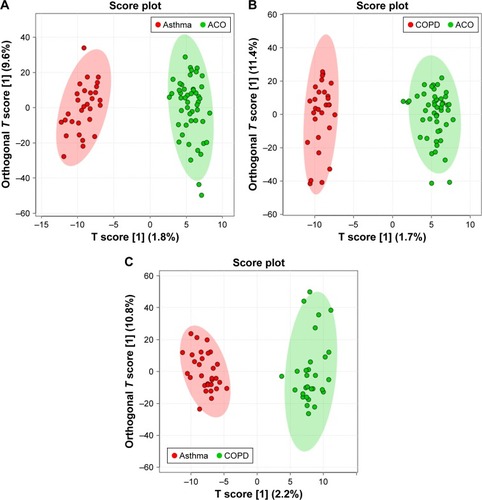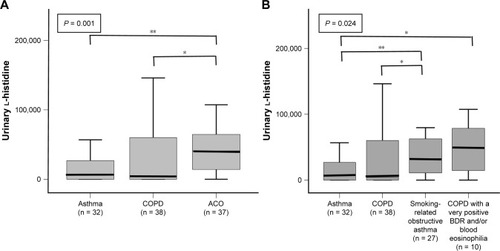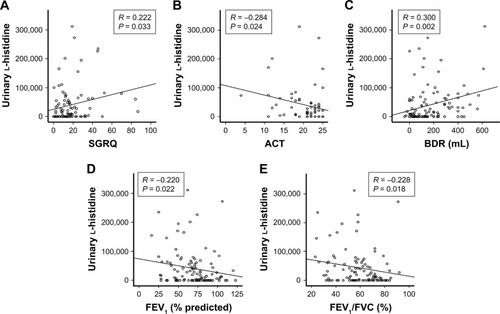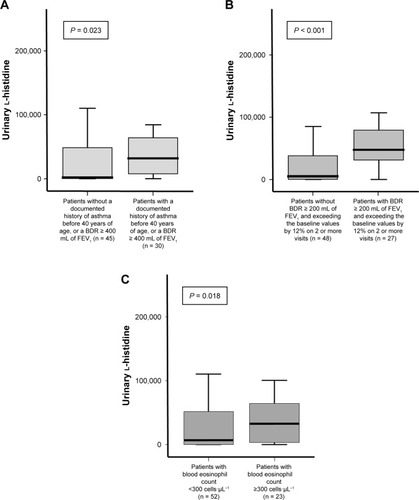Figures & data
Table 1 Comparison of the baseline characteristics of chronic inflammatory airway diseases
Figure 1 Differential urinary metabolic profiles in patients with asthma–COPD overlap (ACO), asthma, and COPD.

Figure 2 Urinary l-histidine levels in chronic inflammatory airway diseases according to disease classifications.
Abbreviations: ACO, asthma-COPD overlap; BDR, bronchodilator response.

Figure 3 Correlation between urinary l-histidine levels and parameters.
Abbreviations: ACT, asthma control test; BDR, bronchodilator response; FEV1, forced expiratory volume in 1 second; FVC, forced vital capacity; RV, residual volume; SGRQ, St George Respiratory Questionnaire; TLC, total lung capacity.

Table 2 Comparison between frequent exacerbator and non-frequent exacerbator
Figure 4 Urinary l-histidine levels for each category of patients with Th-2 features of ACO as agreed upon by experts.
Abbreviations: ACO, asthma–COPD overlap; BDR, bronchodilator response; FEV1, forced expiratory volume in 1 second.

